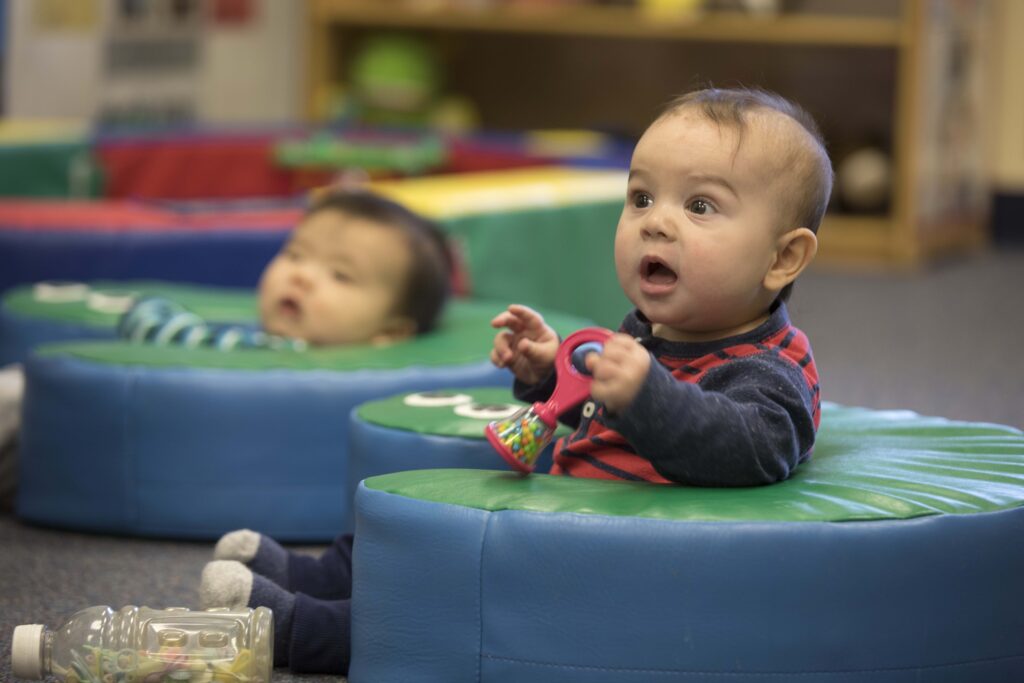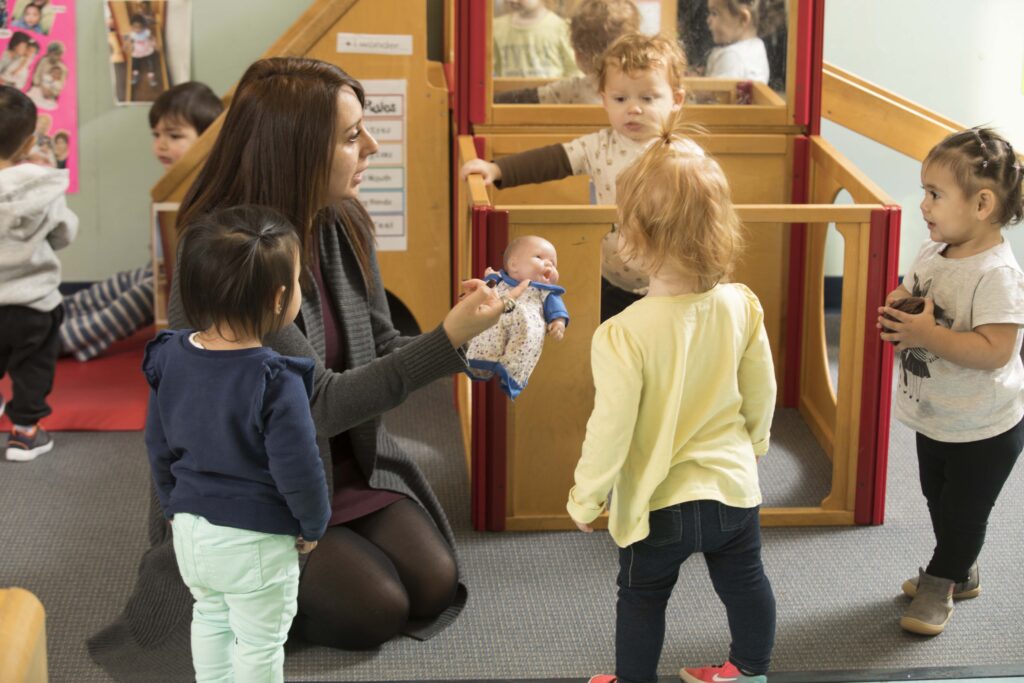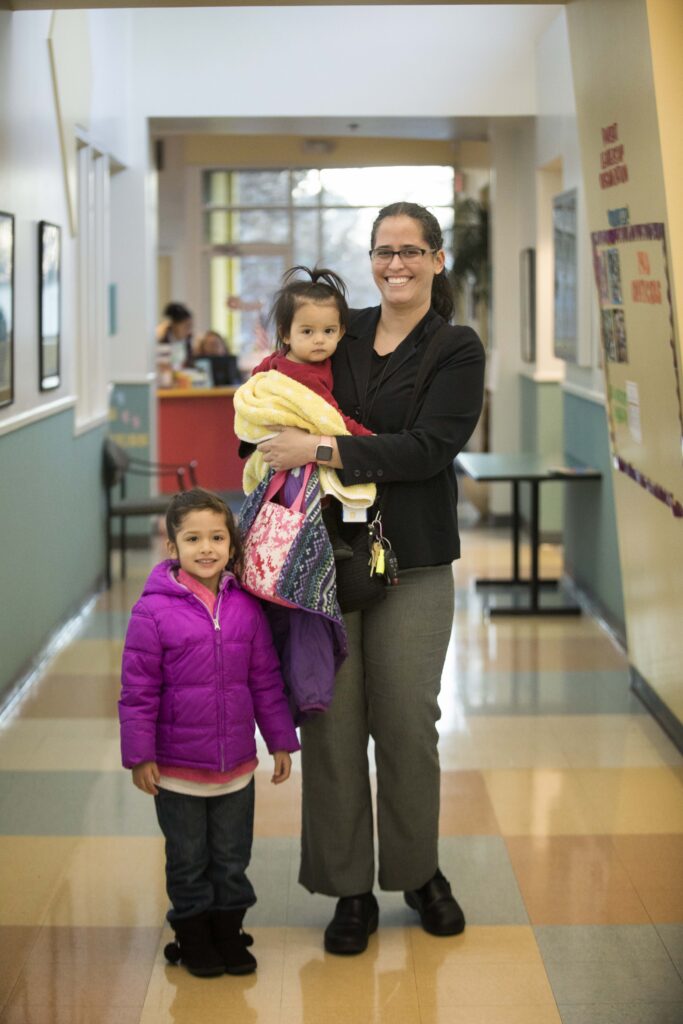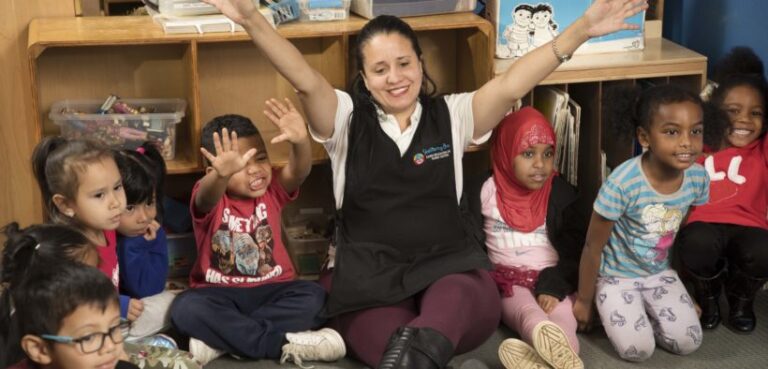A few years ago, I worked as a coach supporting a Pre-K teacher with young dual language learners (DLLs) – many of whom spoke Spanish. Nathan was one of the sweet four-year-old DLLs, and he didn’t say much, in English or in Spanish. His teachers diligently read interesting, sophisticated books for their weekly repeated read-aloud and used the focus words from these reads throughout the day in meaningful ways. One of these books was Rain School by James Rumford, set in the African nation of Chad. When the children in this story arrive at school, there is no school building. They cooperate or work together to build their school. Later, when the rains come, the school washes away and disappears.
One day, I was on the playground with the class when Nathan began to bring me dried leaves and acorns. When I said, “Oh, thank you for these acorns and leaves! Tell me about these leaves, Nathan. Why are they so brown and crunchy?” He looked at me quietly for a moment and then declared, “The chlorophyll has disappeared!” I about leaped out of my shoes for joy. This child that rarely spoke just used the focus word, “disappeared,” from the story in a meaningful way and, in addition, a scientific term! After talking a bit more with Nathan, I ran over to his teacher and exclaimed, “It’s working! You are bringing the book and vocabulary to life for your children! Listen to what Nathan just said. . .”
There are a lot of myths and misconceptions floating around about dual language learners and the benefits of bilingualism. But we want to set the record straight! Like Nathan, DLL students in your class can learn and thrive. Here are 5 FACTS that every teacher should know about DLLs:
FACT #1
Babies are born with the ability to learn multiple languages. They can process and store individual sounds from different languages and show a preference for language exposed to in utero. (Byers-Heinlein, Burns, & Werker, 2010).


FACT #2
Bilingual children can achieve the same proficiency in the phonological and grammatical aspects of their two languages, just like monolingual children do in one language.
FACT #3
Dual language learners are able to switch between two languages. “Code switching” is a typical feature of bilingual development not a sign of confusion or delay. They are simply borrowing words they don’t know in one language from the other.


FACT #4
For the benefits of bilingualism to be seen, the child must have consistent exposure to both languages.
FACT #5
Families can play a major role in facilitating language proficiency by using the language they know best with their children.

What teachers can do tomorrow!
You might be asking, “What are my next steps?” “What can I start doing right away?” Here are 4 ways to support DLL’s in your classroom that will make a lasting impact tomorrow:
- Encourage families to use their home language with their children. This allows them to be their child’s teacher. Unsure who speaks a different language at home, or wondering what their home language is? Don’t worry! Give this survey to your families to learn more about your children’s home language and culture!
- Encourage families to read books, sing songs, play rhyming games, and tell stories in their home language. This keeps their cultural traditions alive and supports home language and early literacy development. Sometimes building partnerships with families can be difficult. Here is a resource to support you in cultivating this important relationship!
- Support the home language in your classroom – the home language is the first language children use to learn about the world around them. Allow children to use it to communicate and you can learn a few words to use too!
- Create an environment that celebrates children’s language and culture – use songs, rhymes, and finger plays in different languages. We have compiled a collection of rhymes from around the world (AND we have songs in Spanish on page 40!) for you to incorporate throughout your day!
I hope these facts, resources, and tips have expanded your scope of understanding and will help you welcome the dual language learners in your classroom so they can thrive and succeed!
Recommended Resources found in the Cox Campus Resource Library:


